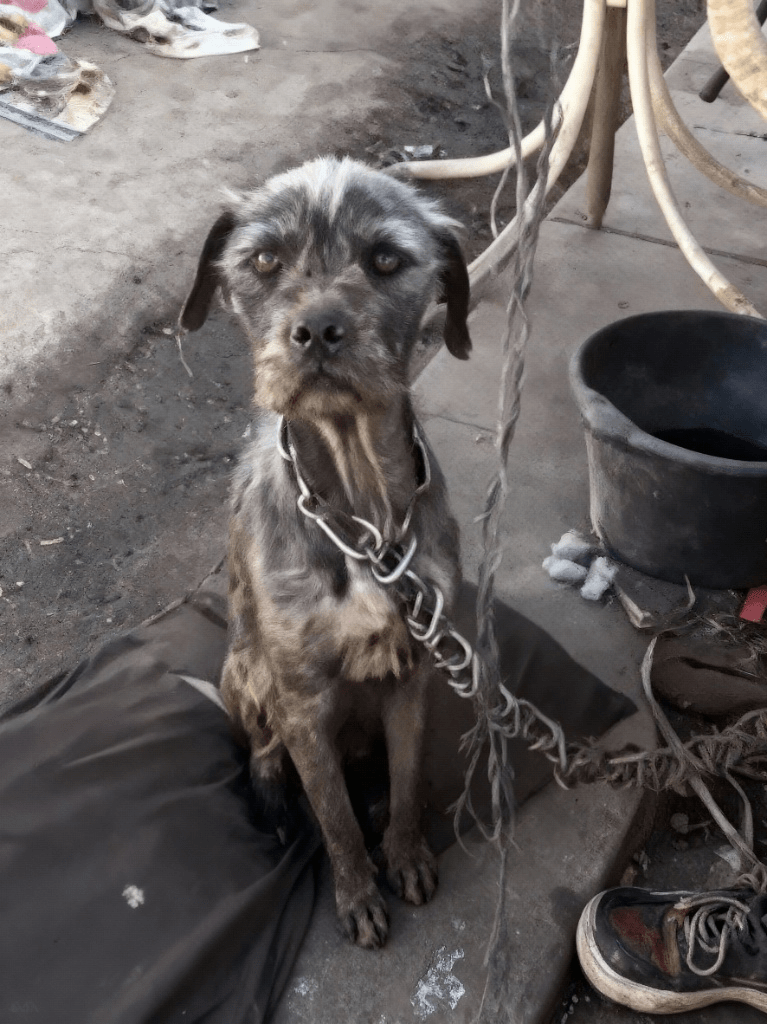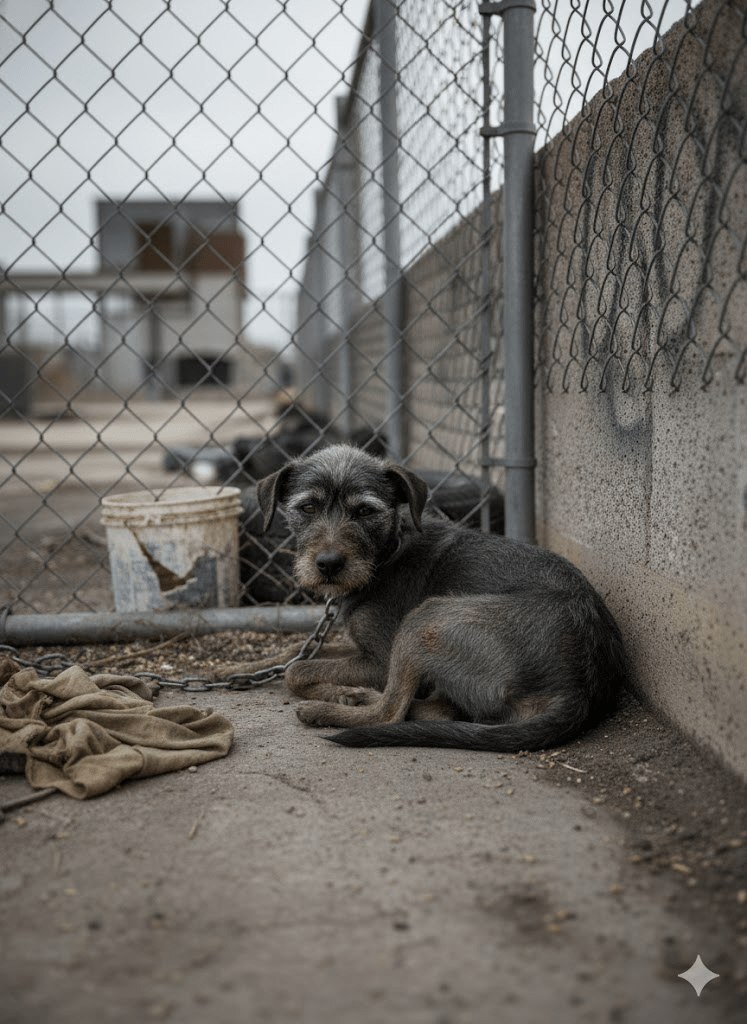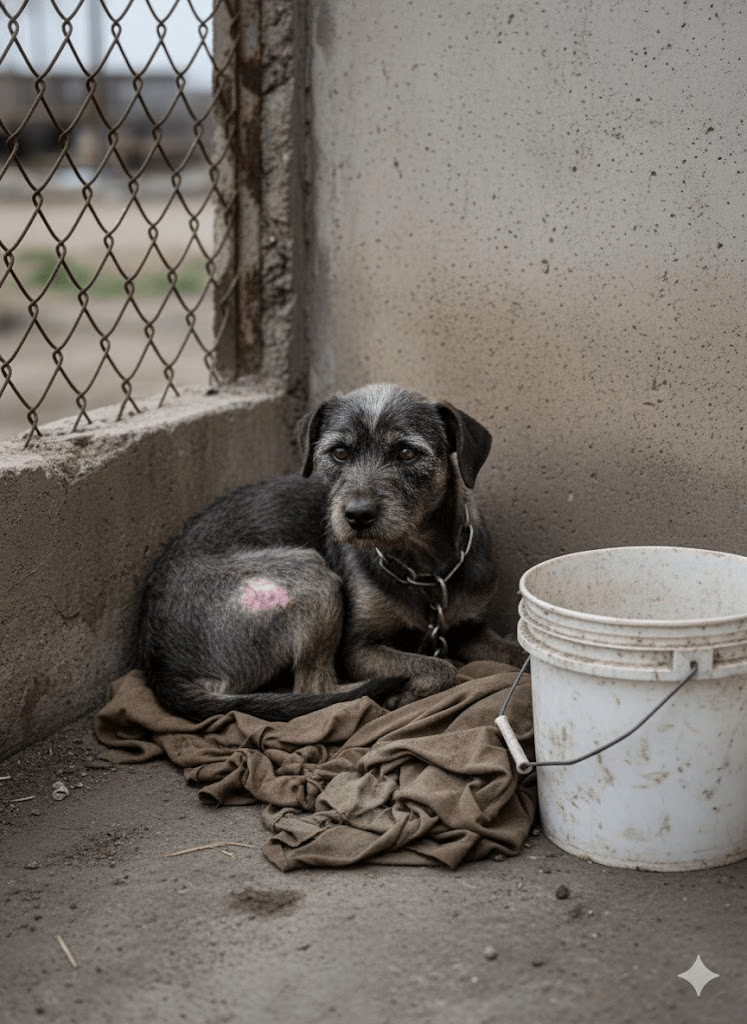The image before us tells a poignant story, one that is tragically common yet often overlooked. A small dog, with eyes that convey a mixture of apprehension and weariness, sits tethered by a heavy chain. Its fur appears matted and dusty, hinting at prolonged exposure to harsh conditions. The immediate surroundings are stark, devoid of comfort or warmth – a concrete ground, discarded items, and a general air of neglect. This single snapshot serves as a powerful reminder of the countless animals worldwide who endure lives of hardship, their basic needs unmet, their potential for joy and companionship stifled. It prompts us to look beyond the surface, to delve into the complex issue of animal neglect, and to consider our collective responsibility towards these vulnerable creatures. This article aims to explore the multifaceted aspects of dog neglect, from its causes and consequences to potential solutions and the crucial role each of us can play in fostering a more compassionate world for our canine companions.

Animal neglect manifests in various forms, each detrimental to a dog’s well-being. It can range from inadequate food and water, as suggested by the lack of a proper bowl in the image, to insufficient shelter from the elements. Many neglected dogs are perpetually chained or confined to small, unsanitary spaces, denying them the exercise, mental stimulation, and social interaction crucial for their physical and psychological health. Medical neglect is another significant aspect; injuries and illnesses often go untreated, leading to prolonged suffering and preventable complications. The dog in the photograph, with its somewhat listless posture and dull coat, could very well be suffering from a myriad of underlying health issues that are not immediately apparent but are undoubtedly impacting its quality of life.

The roots of animal neglect are complex and often intertwined with socioeconomic factors, lack of education, and sometimes, sheer ignorance or indifference. Poverty can make it difficult for owners to afford proper food, veterinary care, or suitable housing for their pets. In some cultures, animals are viewed as property rather than sentient beings, leading to a diminished sense of responsibility for their welfare. A lack of understanding about a dog’s needs, such as the importance of regular exercise, socialization, and preventative healthcare, can also contribute to neglect, even when owners have good intentions. The dog’s bleak surroundings in the image, with what appears to be a makeshift setup, could be indicative of an owner struggling with limited resources or an unawareness of appropriate animal care.

The consequences of neglect on a dog are profound and far-reaching, impacting both their physical and psychological health. Physically, neglected dogs often suffer from malnutrition, dehydration, parasites, skin conditions, and untreated injuries or diseases. Their immune systems can be compromised, making them more susceptible to illness. Psychologically, constant confinement, lack of social interaction, and chronic stress can lead to behavioral issues such as aggression, fear, anxiety, and depression. They may become withdrawn and mistrustful of humans, making rehabilitation a lengthy and challenging process. The dog’s melancholic gaze in the picture could be a window into the deep emotional toll that its current living situation has exacted.







